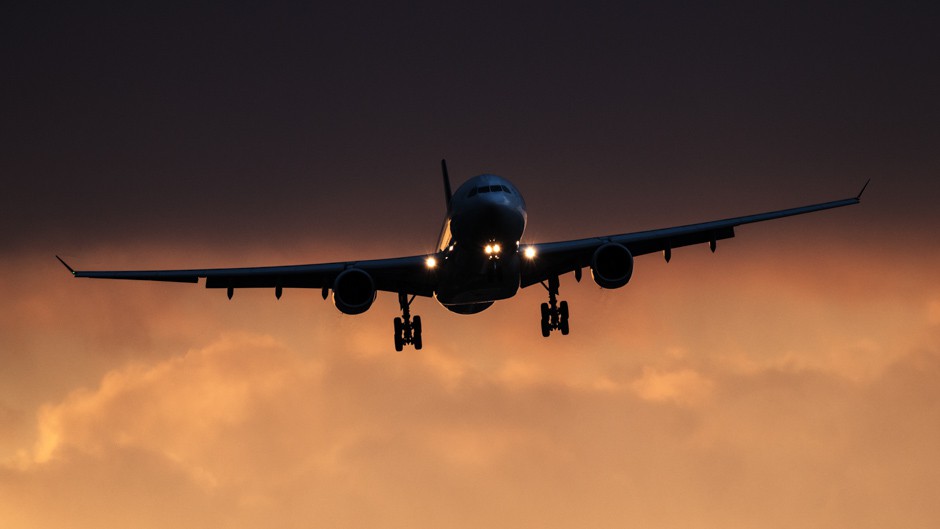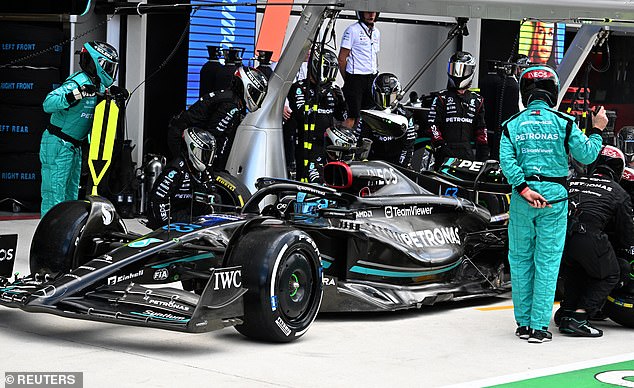The Airline Industry's Fight For Survival Amidst Global Oil Supply Shocks

Table of Contents
The Impact of Rising Fuel Costs on Airline Operations
The airline industry is inherently energy-intensive. Fluctuating oil prices, therefore, directly impact airlines' bottom line, presenting a significant threat to their financial stability. This volatility creates significant uncertainty, making long-term planning incredibly difficult.
Increased Operational Expenses and Reduced Profit Margins
The most immediate impact of rising fuel costs is a dramatic increase in operational expenses. This directly reduces profit margins, forcing airlines to seek ways to offset these increased costs. The consequences can be severe:
- Increased fuel surcharges: Airlines often pass on a portion of the increased fuel costs to passengers through surcharges, potentially impacting demand.
- Pressure on ticket pricing strategies: Balancing the need to cover costs with maintaining competitiveness in a price-sensitive market creates a significant challenge.
- Impact on cargo operations: Higher fuel costs also affect the profitability of air cargo, impacting the global supply chain.
- Potential for layoffs and route cancellations: In extreme cases, airlines may resort to layoffs or even cancel less profitable routes to mitigate losses.
Strategies for Fuel Cost Mitigation
Airlines are employing various strategies to manage and reduce fuel costs:
- Investing in new, fuel-efficient aircraft: Modern aircraft are significantly more fuel-efficient than older models, offering long-term cost savings.
- Implementing advanced flight planning software: Optimized flight paths and reduced taxiing times can contribute to fuel savings.
- Exploring alternative fuels (biofuels, sustainable aviation fuel): The transition to sustainable aviation fuels (SAFs) is crucial for both cost management and environmental responsibility.
- Fuel hedging contracts: Entering into fuel hedging contracts can help mitigate some of the risk associated with price volatility, although this strategy also carries its own risks.
The Effect on Passenger Demand and Ticket Prices
The increased cost of air travel, driven by higher fuel prices, inevitably impacts passenger demand. This effect is not uniform across all passenger segments.
The Price Elasticity of Demand for Air Travel
The price elasticity of demand refers to how sensitive demand is to price changes. For air travel, this elasticity varies depending on the passenger segment:
- Impact on leisure travel: Leisure travelers are often more price-sensitive and may postpone or cancel trips in response to higher ticket prices.
- Impact on business travel: Business travelers are generally less price-sensitive, but even they will seek alternatives like video conferencing if costs become excessive.
- Potential for decreased overall demand: The combined effect of reduced demand from both leisure and business travelers can significantly impact airline revenue.
- The role of competing transportation methods: Higher airfares can make alternative transportation options, such as trains or buses, more attractive.
Airline Strategies to Maintain Passenger Numbers
To counteract the potential decline in passenger numbers, airlines are employing several strategies:
- Targeted marketing campaigns: Airlines are focusing on attracting price-sensitive travelers through targeted promotions and discounts.
- Flexible booking policies: Offering flexible booking options and allowing changes without hefty fees can entice passengers.
- Partnerships with travel agencies: Collaborating with travel agencies allows airlines to reach wider customer bases.
- Improved customer experience: Providing excellent customer service and enhanced in-flight amenities can help maintain loyalty.
Exploring Sustainable Aviation and Alternative Fuels
The airline industry is under increasing pressure to reduce its carbon footprint and adopt more sustainable practices. This necessitates a shift towards alternative fuels and greener technologies.
The Drive for Sustainability in the Airline Industry
The environmental impact of aviation is undeniable. Airlines are actively pursuing sustainable solutions:
- Carbon offsetting programs: Investing in projects that reduce greenhouse gas emissions to compensate for the industry's carbon footprint.
- Investment in electric and hydrogen aircraft: Research and development in electric and hydrogen-powered aircraft are crucial for long-term sustainability.
- Research and development of sustainable aviation fuels (SAFs): SAFs offer a pathway to decarbonizing air travel without compromising efficiency.
Government Regulations and Incentives for Green Aviation
Governments play a vital role in driving the adoption of sustainable aviation practices:
- Government subsidies for SAF development: Financial support for research and production of SAFs can accelerate their widespread adoption.
- Carbon trading schemes: Implementing carbon trading mechanisms can incentivize airlines to reduce emissions.
- Stricter emission standards: More stringent emission regulations can pressure airlines to invest in cleaner technologies.
- Tax incentives for sustainable technologies: Tax breaks and other incentives can make sustainable investments more attractive to airlines.
Conclusion: Navigating the Turbulence – The Airline Industry's Future Amidst Oil Supply Shocks
The airline industry faces a complex challenge in navigating the turbulent waters of volatile oil prices. Rising fuel costs directly impact profitability, passenger demand, and the industry's long-term sustainability. However, through strategic cost management, innovative solutions, and a commitment to sustainable aviation practices, the industry can adapt and thrive. The continued development and adoption of sustainable aviation fuels (SAFs), coupled with government support and technological advancements, are crucial for the airline industry's long-term survival and success. Learn more about the challenges and innovative solutions being implemented in the "Airline Industry's Fight for Survival Amidst Global Oil Supply Shocks" by researching sustainable aviation initiatives and the impact of energy prices on global markets.

Featured Posts
-
 Max Verstappen Welcomes Baby Girl Ahead Of Miami Grand Prix
May 04, 2025
Max Verstappen Welcomes Baby Girl Ahead Of Miami Grand Prix
May 04, 2025 -
 26 1 4
May 04, 2025
26 1 4
May 04, 2025 -
 Russell Westbrooks Historic Performance Nba History Made In Jazz Nuggets Game
May 04, 2025
Russell Westbrooks Historic Performance Nba History Made In Jazz Nuggets Game
May 04, 2025 -
 What Annoyed Canelo Alvarez About David Benavidez A Boxers Perspective
May 04, 2025
What Annoyed Canelo Alvarez About David Benavidez A Boxers Perspective
May 04, 2025 -
 The Return Of Final Destinations Most Iconic Death A 22 Year Wait Ends
May 04, 2025
The Return Of Final Destinations Most Iconic Death A 22 Year Wait Ends
May 04, 2025
